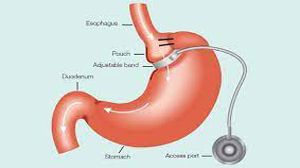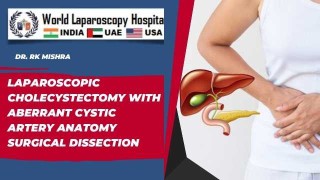Laparoscopic TAPP Hernia Repair
Add to
Share
302 views
Report
2 months ago
Description
Laparoscopic Transabdominal Preperitoneal (TAPP) Hernia Repair is an advanced minimally invasive surgical technique used for the treatment of inguinal hernias. Over the past few decades, laparoscopic approaches have revolutionized hernia surgery, offering patients less pain, faster recovery, and reduced risk of complications compared to traditional open surgery. What is TAPP Hernia Repair? TAPP stands for TransAbdominal PrePeritoneal repair. In this procedure, the surgeon enters the abdominal cavity using a laparoscope—a thin tube with a camera—and creates a space in the preperitoneal layer (between the peritoneum and abdominal wall) to place a synthetic mesh over the hernia defect. Unlike the totally extraperitoneal (TEP) approach, TAPP requires entering the abdominal cavity, giving the surgeon a broader view of the hernia and surrounding structures. Indications TAPP Hernia Repair is recommended for: Unilateral or bilateral inguinal hernias Recurrent hernias after previous open repair Patients seeking faster recovery and minimal scarring Complex hernias, including those with large defects Procedure Overview Anesthesia: The procedure is performed under general anesthesia. Trocar Placement: Small incisions are made in the abdomen, usually near the umbilicus and lower abdomen, to insert laparoscopic ports. Accessing the Hernia Site: The abdominal cavity is inflated with CO₂ gas, and the laparoscope is used to visualize the hernia. Peritoneal Flap Creation: The peritoneum overlying the hernia defect is carefully dissected to expose the preperitoneal space. Hernia Reduction: The protruding tissues or intestines are gently pushed back into the abdominal cavity. Mesh Placement: A synthetic mesh is placed over the hernia defect to reinforce the abdominal wall. Peritoneal Closure: The peritoneum is sutured or stapled back over the mesh, preventing direct contact between the mesh and abdominal organs. Completion: Trocar sites are closed, and the patient is moved to recovery. Advantages of Laparoscopic TAPP Hernia Repair Minimally invasive: Smaller incisions lead to less post-operative pain and faster recovery. Reduced risk of infection: Smaller wounds reduce the likelihood of infection compared to open surgery. Lower recurrence rates: Proper mesh placement ensures durable repair. Early return to daily activities: Most patients resume normal activities within a week. Bilateral repair in a single operation: Both hernias can be treated simultaneously with minimal additional trauma. Risks and Considerations While TAPP Hernia Repair is safe, it carries some risks, including: Injury to blood vessels, nerves, or abdominal organs Seroma or hematoma formation Mesh-related complications Recurrence (though less frequent than with open repair) Recovery and Postoperative Care Patients usually stay in the hospital for 1 day. Key recovery guidelines include: Avoid heavy lifting for 4–6 weeks Gradual return to normal activities Pain management with prescribed medications Follow-up visits to monitor healing and ensure no complications Conclusion Laparoscopic TAPP Hernia Repair represents a modern, effective, and patient-friendly approach to inguinal hernia management. Its minimally invasive nature, faster recovery, and excellent outcomes make it a preferred choice for suitable patients. Consultation with an experienced laparoscopic surgeon ensures the best results tailored to the individual’s condition.
Similar Videos





